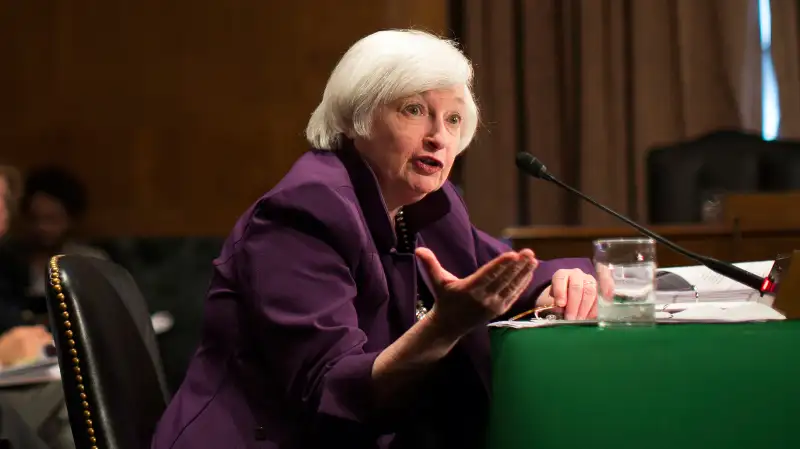What the Stock Market Turmoil Means for Interest Rates
Money is not a client of any investment adviser featured on this page. The information provided on this page is for educational purposes only and is not intended as investment advice. Money does not offer advisory services.

If you spent Monday staring at the ceiling and wondering what to do, you may have more in common with Federal Reserve Chair Janet Yellen than you think.
Yellen’s been pondering an interest-rate hike since she started her term as Fed chair, and, until recently, most pundits thought the Fed’s powerful Federal Open Market Committee would announce its first rate hike in six years at its Sept. 17th meeting.
But Monday’s sell-off in stocks and commodities — as well as the plunge in bond yields and renewed fears about the global economy — may push back the Fed’s first rate hike as far back as March 2016.
The Federal Reserve has two mandates: To keep inflation low, and to keep the economy running smoothly. Currently, however, the main enemy looks like deflation, not inflation. The consumer price index, the government’s main gauge of inflation, was virtually unchanged the 12 months ended July.
And many commodity prices have collapsed. Light, sweet crude oil — the kind the U.S. produces — has fallen 60% from last year. “Industrial metals prices are at their lowest since July 2009, the first month of the recovery,” says John Lonski, managing director and chief economist for Moody’s Capital Research Group.
The markets, too, are arguing against inflation.
When bond traders think inflation is in the air, they demand higher yields. But there’s not a whiff of inflation in the Treasury market: The bellwether 10-year Treasury note yield is currently hovering near just 2%. Comparing a 10-year T-note to a 10-year Treasury inflation-protected note shows that Wall Street expects inflation to be 1.56% for the next decade.
Nor does the economy show signs of overheating. Average weekly earnings rose 2.4%, to $864.65, in July. And while the unemployment level is 5.3%, the number of discouraged workers — those who have essentially given up looking for a job — has remained virtually unchanged the past 12 months, according to the Bureau of Labor Statistics.
Because of turmoil in global financial markets, expectations for a Fed rate hike in September are already changing.
Barclays Research, which had been predicting that the Fed would start hiking rates next month, now believes the Fed won’t act until March. “Given the uncertainty around the current global outlook, the timing of the rate hike seems more uncertain than usual,” the firm indicated in a note on Monday.
The Fed may also be concerned that delaying the once widely anticipated September rate hike could spark even more fears. Still, the odds of a September rate hike seem to be falling along with the Dow Jones industrial average. “The fed funds futures market has priced in a 24% chance of a rate hike on Sept. 17th,” Lonski says. “A couple of weeks ago, that was an 85% chance.”
Meanwhile, a just-released survey by the National Association for Business Economics found that only 37% of economists believe the Fed will raise rates next month.
Read next: 3 Charts That Explain the Stock Market’s Huge Drop
